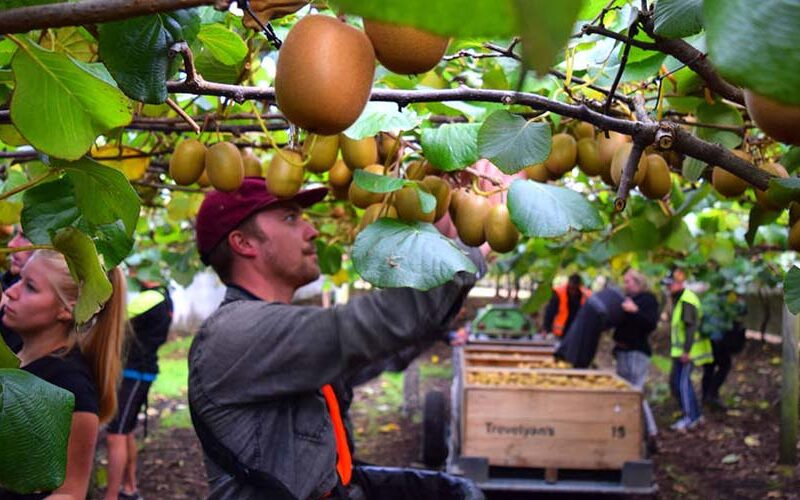Primary industries are still struggling to find enough staff, with dairy estimating it needs 4000 workers – and others learning to make do.
Ironically, lower kiwifruit volumes combined with the arrival of more overseas backpackers has eased the seasonal worker shortage for this year’s horticulture harvest, which in past years meant fruit was left on trees or vines.
More than 52,000 working holiday visas have been approved in recent months, with nearly 36,500 backpackers entering New Zealand since the borders re-opened.
The cap on Recognised Seasonal Employer (RSE) worker numbers was also lifted last spring, from 16,000 to 19,000, the largest change in a decade.
Earlier this year the meat industry estimated it needed 2000 workers and warned that staff shortages may mean a loss of $600 million in value to the sector.
Companies have been allowed to source more than 1000 staff through the Accredited Employer Work Visa (AEWV) programme, and Meat Industry Association chief executive Sirma Karapeeva describes the employment situation as a mixed bag.
“Some companies are facing labour shortages across unskilled and various skill levels, while others have fully staffed their workforce,” she said.
Karapeeva said some companies have found dealing with Immigration NZ relatively easy, but others have found processing times for visas problematic.
Processors and exporters are also continuing to run extensive recruitment campaigns in their local communities to attract and retain talent and supporting training and development opportunities.
The dairy industry needs around 4000 more staff, at a time when competition for labour both globally and locally has never been tighter.
Federated Farmers board member Richard McIntyre said while farmworkers can be sourced through the AEWV scheme, it requires employers to pay the median wage, currently $29.66/hr.
“Farmers are happy to pay $29.66/hr to people with appropriate skills, this is not about employers not wanting to pay higher wages, but this requires us to pay that wage to entry-level staff,” he said.
McIntyre is concerned the narrowing gap between the milk price and break-even point could lead to farmers employing fewer staff and doing more work themselves, potentially creating physical and mental stress.
Federated Farmers is surveying members to get a clearer picture of the impact of immigration and employment.
Economist Shamubeel Eaqub said it has never been harder to find labour, and it is not just dairy experiencing this.
“Other sectors are doing anything they can do to attract labour, and these long-term issues have been around for decades. It’s on us to consider how we can step up and support the people that are working in your teams and businesses,” he said at DairyNZ’s People Expo in Matamata in March.
Rural Contractors NZ chief executive Andrew Olsen said he has not had murmurings from members about labour shortages this year due to successful campaigns enticing returning employees and securing visa for overseas workers.
Olsen said the visa process needs some work.
The government-set pay rates for migrant workers are a looming issue that could create internal tensions in workplaces if those rates exceed the amount paid to existing local workers.
Earlier this month Immigration Minister Michael Wood announced about 7500 people in NZ on working holiday visas will have their visas extended by six months and will have open work rights.
This means they can work for the same employer for longer than three months, where maximum work durations currently apply.
The extension means those on working holiday visas can extend their stay and continue to work in their current casual jobs, or travel and find other work in NZ.
Wood also announced that an increase in the number of Spanish Working Holiday Scheme places will increase from 200 to 2000, following a reciprocal agreement with the government of Spain.










